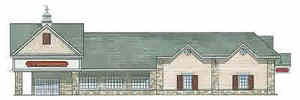While there are many benefits of a lap band surgery or procedure regarding weight loss, there are risks with any surgical operation. Lap Band procedures present a much lower risk than gastric bypass, but there are still risks. Know your facts thoroughly before embarking on any surgery. According the official lap band website, here are a few risks and side effects that could happen on your journey.
• There is a risk with any surgery, especially with patients that are seriously overweight.
• Death is always a risk with any surgery.
• In lap band procedures, gastric perforation can occur. This is a tear in the stomach wall.
• Bodies can have a reaction to a foreign object being placed in the body and reject it.
• There is a risk of stoma obstruction. This is a stomach outlet blockage.
• There is a risk of band slippage.
• Nausea is a common side effect.
• Vomiting can be a common side effect.
• Reflux and regurgitation are common after a lap band procedure.
• Due to side effects, 25% of recipients elected to have the lap band removed.
• It can amplify and create poor esophagus function.
• Constipation can sometimes occur with lap band procedures.
• Diarrhea is reported in some patients receiving a lap band.
• 9 % reported dysphasia. This is difficulty in swallowing.
• Another 9 % required a second surgery to negate problems with the procedure.
• Esophagitis has been reported. This is inflammation of the esophagus.
• Dehydration is common, due to the fact that the stomach can only hold small amounts following a lap band procedure.
• Some patients report abdominal pain.
• Hernias following the procedure have been reported.
• Sometimes, the lap band erodes into the stomach. This can take years, but sometimes happens immediately.
• The only way to correct an eroded lap band is open surgery.
• Infections can occur with the lap band.
• Fatigue has been reported by patients with the lap band.
• Some patients experience burning and tingling at the lap band site.
• Women can experience dysmenorrhea. This condition involves painful and difficult periods.
• Gallstones can occur, and may result in having to have the gall bladder removed.
• Ulcers can occur in the esophagus. This is usually due to acid reflux brought on by the lap band.
• During surgery, spleen or liver damage is a possibility. Sometimes the spleen has to be removed.
• There have been reports of lung problems following the lap band surgery.
• Thrombosis can occur. These are blood clots.
• Damage to major blood vessels can occur.
• The wound where the surgery takes place can rupture.
• Stomach perforation (a tear in the stomach wall) can take place during surgery.
• Those withDiabetes are at more risk for complications.
• Some patients complain of pain at the port site.
• Improper band placement can occur. This will demand another surgery, and may not be able to be performed laproscopically.
• Some patients report a significant increase in gas and bloating.
• Some insurance companies will not pay. Out of pocket, the operation will cost $12,000 to $25,000.
Any surgery should be considered carefully, comparing the benefits of lap band versus the risks. Be sure to discuss the procedure thoroughly with your doctor and other health professionals.
Source: www.lapband.com

